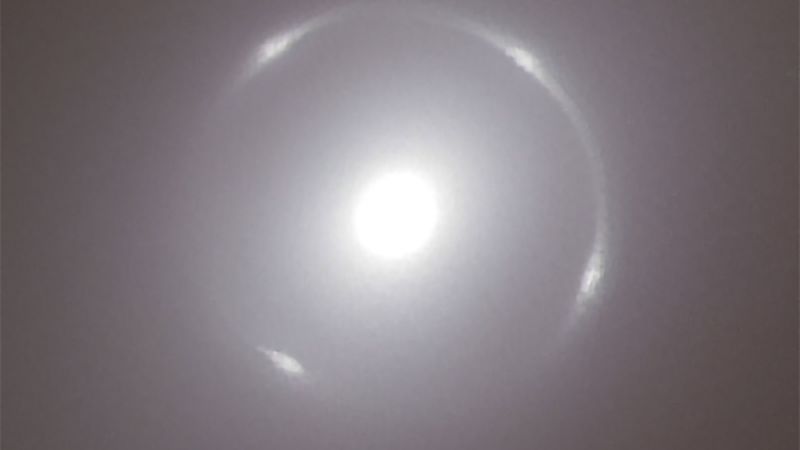The realm of astronomy is often filled with surprising discoveries that unveil the intricate details of the cosmos. Recently, astronomers representing the European Space Agency’s groundbreaking Euclid mission stumbled upon a rare cosmic spectacle, purely by chance. This incidental discovery showcases the power of modern astronomy and the technologies pushing the boundaries of our understanding of the universe.
This extraordinary observation is connected to some of the earliest data collected from the Euclid telescope, which launched in July 2023. The primary purpose of Euclid’s mission is to study the enigmatic components of the universe, particularly the dark universe—areas of space that elude direct observation. During the initial months, researchers focused on calibrating and testing Euclid’s sophisticated instruments. It was during this critical phase that Euclid Archive Scientist Bruno Altieri identified what seemed to be an Einstein ring in the test images relayed back to Earth.
An Einstein ring forms when the light from a distant galaxy bends around an intervening object, such as another galaxy, that lies in the foreground. This optical phenomenon results in a luminous ring surrounding the foreground galaxy, and it has drawn its name from the renowned physicist Albert Einstein. His general theory of relativity predicted that light would curve and brighten when influenced by mass, allowing astronomers to observe far-off celestial bodies through these cosmic lenses.
In this particular instance, the telescope captured an image featuring a well-known galaxy named NGC 6505, located approximately 590 million light-years away. An awe-inspiring aspect of this discovery lies in the identification of a previously unobserved Einstein ring, consisting of distorted light from an even more distant galaxy, which is an impressive 4.42 billion light-years from Earth. This distant galaxy, still unnamed, adds to the intrigue of the findings.
Bruno Altieri expressed excitement over the observations, noting that even in the initial data shot, the ghostly outline of the Einstein ring was apparent. As subsequent images were collected, the clarity and definition of the ring elucidated itself splendidly. This result is detailed in a recent publication in the journal Astronomy & Astrophysics, which contributes to a deeper understanding of such rare phenomena and their significance in exploring universal mysteries, such as dark energy—a force that accelerates the expansion of the universe over time.
Valeria Pettorino, co-author and ESA’s Euclid Project Scientist, reflected on the striking nature of this observation: the ring encircling a galaxy first identified in 1884 underscores the capabilities of the Euclid mission. She noted the juxtaposition of the known and the newly uncovered, reinforcing how even familiar territories in astronomy can still yield new secrets when observed with advanced technology.
The history of NGC 6505 is fascinating; it was initially cataloged by American astronomer Lewis Swift, appearing as a yellowish blob devoid of detail due to atmospheric distortion. However, the Euclid space telescope’s placement above Earth’s atmosphere has enabled astronomers to capture clearer images, revealing intricate features that were hidden from ground-based telescopes.
Einstein rings exemplify strong gravitational lensing, acting like cosmic magnifiers, unveiling distant and otherwise concealed galaxies. The mechanics behind this phenomenon are quite extraordinary. When light from a distant galaxy traverses space toward Earth, it typically follows a straight trajectory. Nonetheless, the phenomenal gravity from a foreground galaxy can warp the light’s path, resulting in a distinctive ring shape.
The formation of an Einstein ring necessitates a unique alignment between the foreground and background galaxies, making these occurrences exceptionally rare—less than 1% of galaxies exhibit this phenomenon. Out of hundreds to thousands of candidates for Einstein-like rings, only a relatively small number have been observed in detail comparable to those provided by the Euclid instrument.
Interestingly, the background galaxy involved in this latest observation almost perfectly aligns with NGC 6505, an alignment that is almost unheard of. This rare and extraordinary alignment affords astronomers an exceptional opportunity to peer into the depths of the unknown galaxy. Such rings can offer insights into its mass, stellar composition, and evolutionary history.
Moreover, the motivations for studying Einstein rings extend beyond mere curiosity; they are pivotal in comprehending dark energy and dark matter. While dark matter remains elusive and undetectable directly, gravitational lensing may provide a proxy for understanding its existence and effects within the cosmos. It is estimated that dark matter constitutes about 85% of the universe’s total matter.
Astronomers anticipate that the newly discovered Einstein ring will unlock significant information about the formation and interplay of matter within galaxies, enhancing our understanding of cosmic evolution. Euclid is expected to greatly expand the catalog of known Einstein rings, heralding a new era of astronomical discovery and insight.
As the ambitious six-year mission progresses, Euclid holds the promise of generating vast datasets, enabling the exploration of billions of galaxies and contributing to the construction of the most precise three-dimensional map of the universe yet attempted. With excitement surrounding the future of the mission, researchers eagerly anticipate the myriad discoveries that lie ahead,



